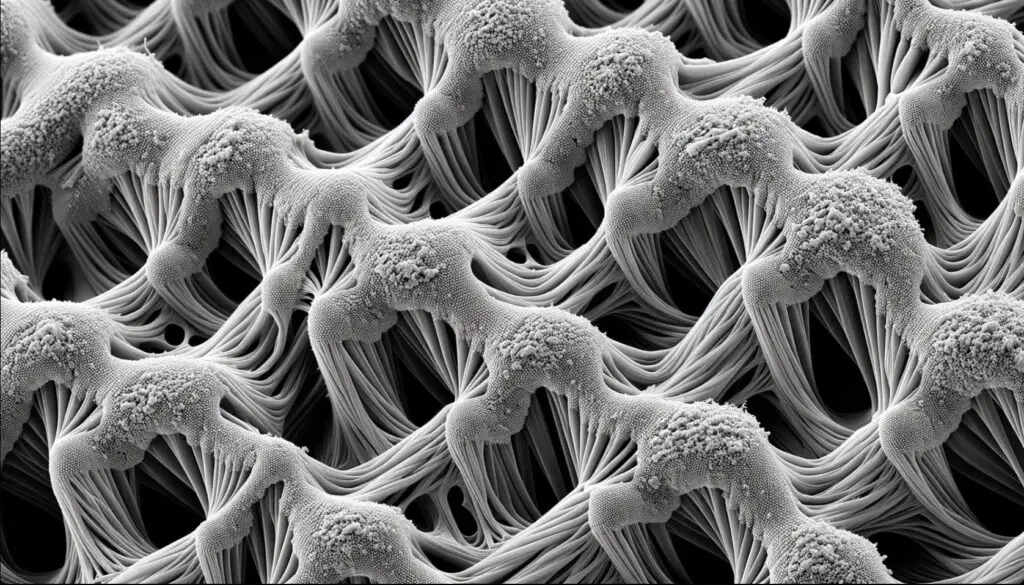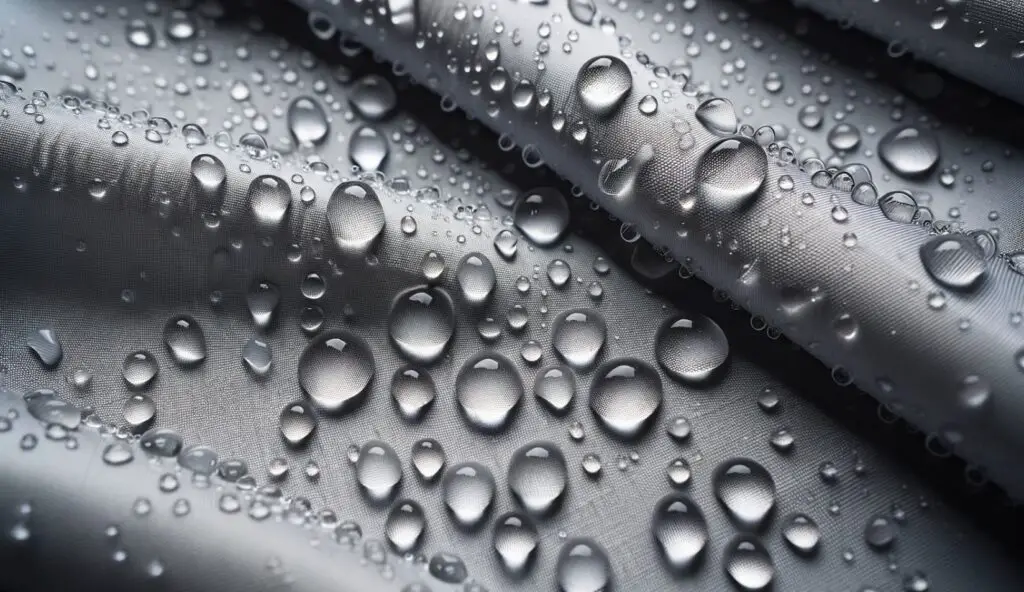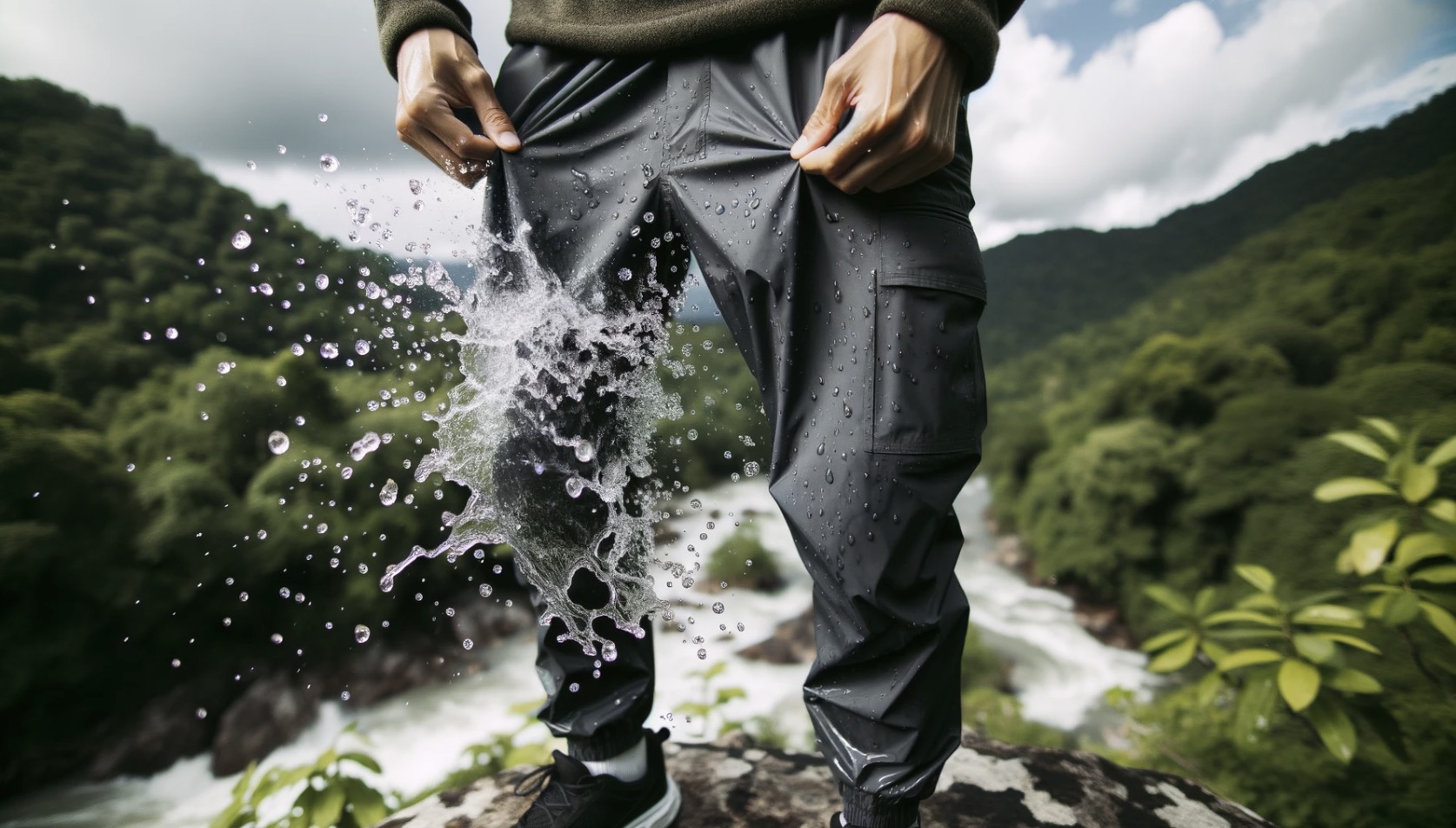Nylon, a synthetic polymer, has been a cornerstone of the outdoor apparel industry for decades. As avid enthusiasts of the outdoors, many of us might have come across nylon in various forms, from our rain gear, jackets, pants, to even our tents and backpacks.
But the question that often pops up: Are nylon pants truly waterproof? The straightforward answer is no, they aren’t inherently waterproof.
However, nylon pants typically offer a level of water resistance, often measured in mm of hydrostatic pressure, with basic nylon fabric usually resisting up to about 600-700mm.
What determines the water resistance of nylon?
When we talk about the water resistance of any fabric, there’s a myriad of factors at play. For nylon, it’s the weave type, denier, and tex that largely determine how waterproof the fabric is:
- Weave Type: The tighter the weave, the less space there is for water to seep through. A denser weave generally equates to better water resistance.
- Denier: This refers to the thickness of the individual fibers. A higher denier usually means a more robust and water-resistant fabric. However, it also tends to be heavier.
- Tex: It’s another measure of fiber thickness, similar to denier. A higher tex also denotes a thicker, often more water-resistant fabric.
| Metric | Description | Influence on Water Resistance |
|---|---|---|
| Weave | Tightness of the fabric’s weave | Tighter = More resistant |
| Denier | Thickness of individual fibers in the fabric | Higher = More resistant |
| Tex | Another measure of fiber thickness | Higher = More resistant |
Why isn’t nylon fully waterproof?
Despite its commendable water resistance, nylon doesn’t clinch the title for being fully waterproof. The reason? Its inherent porosity.

No matter how tightly woven, there will always be minute spaces between the fibers. These spaces might fend off light drizzles, but during a torrential downpour, water droplets will find their way in.
Improving the Waterproof Nature of Nylon
Luckily, for those wet expeditions, there are ways to bolster the waterproof properties of nylon. A common method is applying surface treatments. One popular treatment is the Durable Water Repellent (DWR) finish. This coating makes water bead up and roll off the fabric, rather than soaking through.
Surface Treatments
- Durable Water Repellent (DWR):
- Overview: One of the most common treatments, DWR is a coating applied to the fabric’s surface. This coating doesn’t make the fabric waterproof but instead makes water bead up and roll off it.
- Functionality: DWR works by increasing the surface tension on the fabric’s outer layer, preventing water droplets from spreading and soaking in. Instead, they form rounded beads that simply slide off.
- Limitations: Over time, due to abrasion, exposure to dirt, and regular wear and tear, DWR coatings can wear off. Furthermore, repeated washing, especially with harsh detergents, can diminish its effectiveness.
- Maintenance: For maintaining optimal performance, it’s essential to clean and occasionally reapply DWR treatments. Some DWR sprays or wash-in products can be used to rejuvenate the fabric’s water-repellency.
- Silicone Coatings:
- Overview: Often found in higher-end tents and tarps, silicone treatments enhance the waterproofing capabilities of nylon significantly.
- Functionality: Silicone impregnates the nylon fibers, filling in any micro-gaps and providing a continuous water barrier. This not only makes the fabric waterproof but also improves its overall strength.
- Limitations: Silicone-treated nylons can’t be seam taped conventionally, so seams often have to be hand-sealed. Also, once a fabric is silicone-coated, it’s challenging to make any modifications or repairs.
Laminates and Membranes
- Polyurethane (PU) Laminates:
- Overview: PU laminates are thin layers bonded to the nylon fabric, forming an effective water barrier.
- Functionality: These laminates prevent water from penetrating through while still allowing some degree of moisture vapor to escape, ensuring you don’t feel clammy.
- Varieties: There are breathable and non-breathable PU laminates. Breathable versions are more suitable for active wear, where sweat-wicking is crucial.
- Limitations: Over time, PU can degrade, especially under constant UV exposure or due to hydrolysis in humid conditions.
- Taped Seams:
- Overview: Even if nylon is treated or laminated to be waterproof, the needle holes from stitching can be a weak point. Taped seams address this vulnerability.
- Functionality: A waterproof tape is applied over the seams, ensuring no water can seep through these stitched areas.
- Limitations: The process can be labor-intensive, and not all nylon gear might have taped seams, especially budget options.
Beyond Treatment: Design Considerations
Improving the waterproof nature of nylon isn’t just about treatments and coatings. Design elements can play a vital role too. Features like storm flaps over zippers, adjustable cuffs and hems, and gusseted designs can all contribute to keeping water out. These design elements, combined with treated or laminated nylon, ensure that water has minimal points of entry.

In conclusion, while untreated nylon has inherent water-resistant properties, there’s a vast array of treatments, laminates, and design considerations that can elevate nylon’s ability to repel water.
Whether you’re investing in pre-treated gear or considering DIY solutions, understanding the mechanics behind these improvements can help you make informed decisions and keep you dry in the great outdoors.
However, over time and with wear, these treatments can deteriorate. It’s crucial for outdoor enthusiasts to reapply these treatments periodically to maintain the water-resistant properties of their nylon gear.
The other advantages of nylon
Apart from its water resistance, nylon boasts several other features that make it a favorite among outdoor enthusiasts:
- Durability: Nylon is known for its high tensile strength, making it resistant to wear and tear.
- Lightweight: For those conscious about shedding every ounce from their backpack, nylon offers strength without adding much weight.
- Quick-drying: Once wet, nylon tends to dry faster than many other fabrics, which is a boon in unpredictable weather.
Seeking a more water-resistant alternative?
If the inherent water resistance of nylon doesn’t quite meet your needs, there are alternatives:
- Polyester: Often used in tandem with nylon, polyester is also treated with DWR to enhance its water resistance.
- Gore-Tex: A renowned name in the world of waterproof fabrics, Gore-Tex is a membrane that is laminated between layers of fabric, making it both breathable and waterproof.
- eVent: Similar to Gore-Tex, but with a different method of allowing breathability.
Conclusion
To wrap up our dive into the world of nylon:
- Nylon pants are water-resistant, but not inherently waterproof.
- The water resistance of nylon is determined by its weave, denier, and tex.
- Surface treatments, like DWR, can enhance the water resistance of nylon.
- Nylon offers several advantages, including durability, lightweight nature, and quick drying properties.
- For those seeking more water resistance, options include polyester, Gore-Tex, and eVent.
In our pursuit of the perfect outdoor gear, it’s essential to recognize that while nylon has its strengths and limitations, it remains a reliable companion for many of our adventures.




